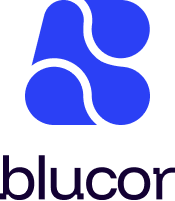- Blucor's Newsletter
- Posts
- How a Leading Manufacturer Solved Its Hiring Crisis with AI Recruiting
How a Leading Manufacturer Solved Its Hiring Crisis with AI Recruiting

TL;DR:
A Midwest manufacturer faced a severe labor shortage and months-long hiring cycles that drained recruiter capacity. By automating pre-screening with AI, the company cut recruiting costs by 78%, saved over 100 hours per month, and filled roles weeks faster while maintaining candidate satisfaction above 9/10.

The Manufacturing Hiring Crunch
Manufacturers across the U.S. are under pressure. Skilled labor is scarce, applicant quality is uneven, and competition for reliable workers grows each quarter. Many HR teams struggle not just to find talent but to screen it fast enough to keep production lines running.
Recruiters spend hours reviewing resumes, scheduling phone screens, and chasing no-shows. Each delay compounds the problem. Overtime costs rise, supervisors fill shifts themselves, and candidate drop-off increases. The result is a hiring process that feels stuck in slow motion.
Inside the Company
Twin City Fan, a 3,000-employee HVAC manufacturer based in the Midwest, faced exactly this challenge. Their recruiting team handled hundreds of open requisitions at once, most for skilled and semi-skilled production roles. Each recruiter juggled resume reviews, phone screens, and scheduling across multiple shifts. The process was manual, repetitive, and exhausting.
Their Director of HR described the situation plainly: “Our annual spend was around $100,000 per recruiter including all related costs. BlancAI and Hope eliminated those expenses.”
The Challenge: Too Many Applicants, Too Little Time
The company’s hiring funnel was overflowing. Each job posting attracted hundreds of applicants, but only a small fraction met basic requirements such as work authorization, shift availability, or experience with industrial tools. Recruiters spent hours each day filtering resumes and conducting short phone screens that rarely led to qualified hires.
Three problems stood out:
Volume without quality: Hundreds of applicants per role, but few fit the job.
Manual screening fatigue: Recruiters spent up to 10 hours weekly per role on repetitive calls.
Slow time-to-hire: Weeks passed before qualified candidates reached the interview stage.
By the time recruiters reached strong candidates, many had already accepted other offers.
The Turning Point: Automating Pre-Screening with AI
The HR team decided to test a digital hiring solution built for high-volume roles. They partnered with BlancAI, whose voice-based AI agent, Hope, automates pre-screening for frontline workers. Hope conducts phone interviews, verifies key details like shift preference and pay expectations, and updates the ATS automatically.
Recruiters trained Hope on their job criteria once, then watched her handle the rest. She screened applicants around the clock in multiple languages and surfaced only the top 10% for review.
This change did not replace recruiters. It freed them to focus on final interviews, onboarding, and workforce planning.
Results: Faster Hiring, Lower Costs, Happier Candidates
After adopting AI pre-screening, the manufacturer saw measurable impact:
78% reduction in recruiting costs
100+ hours saved per recruiter each month
67% reduction in time and cost per hire
9.4/10 candidate satisfaction score
Candidates completed interviews over the phone at any hour, and recruiters appreciated the accuracy and consistency of AI screening. The HR team reported that Hope’s assessments aligned closely with their own judgments, improving confidence in shortlists.
The company also noticed fewer no-shows. Candidates who completed the AI interview were more engaged and responsive during scheduling, leading to smoother onboarding.
Lessons for Other Manufacturers
This case highlights several lessons for manufacturers facing similar recruitment challenges:
Automate early-stage screening. Manual resume review and phone screening consume most recruiter time but add little strategic value. AI can handle these steps consistently and at scale.
Integrate with existing systems. Seamless ATS integration prevents data silos and keeps recruiters in their familiar workflow.
Prioritize candidate experience. A phone-based AI that speaks multiple languages can make the process accessible and human, even at scale.
Measure outcomes, not activity. Focus on metrics like time-to-hire, cost per hire, and candidate satisfaction to evaluate success.
The Bigger Picture
Manufacturing competitiveness depends on workforce agility. As production lines modernize, hiring must follow suit. Digital recruiting solutions such as AI pre-screening are no longer experimental. They allow HR teams to scale hiring without scaling headcount, maintain quality under pressure, and keep factories fully staffed.
Conclusion
The hiring challenges facing manufacturers are structural, but they are solvable. By combining automation with human judgment, companies can reclaim time, cut costs, and improve candidate experience. Twin City Fan’s story shows what is possible when technology becomes a teammate, not a threat.
See how AI recruiting can transform your hiring process.
Book a demo or start a free trial to experience how Hope can help your team hire faster and smarter.